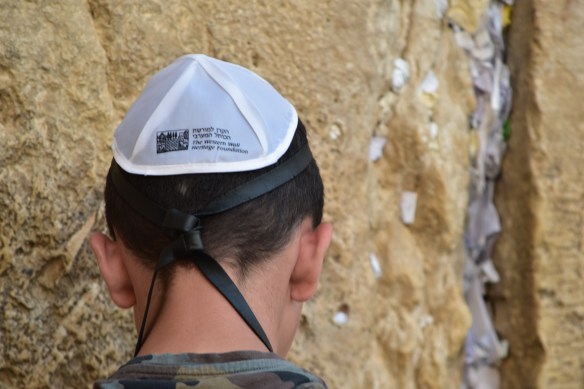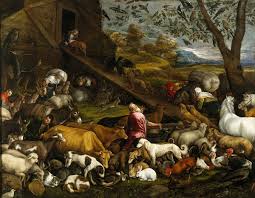In Parshat Toldot, as the last of the forefathers is birthed and named, we are reminded that Isaac stands out for a quiet but powerful distinction. He is the only one of the forefathers whose name was never changed.
Abram became Abraham.
Jacob became Israel.
But Isaac remains Isaac — Yitzchak — from the moment God speaks his name before he is even conceived. His existence, his identity, and his destiny are declared in advance. Not earned, not negotiated, not revised.
God tells Abraham that Sarah will have a son in her old age (Genesis 17:19), and when he laughs at the impossibility of it, that laughter becomes his name. His very being is rooted in divine certainty: what looks impossible to humans is already written by God. Isaac’s name is fixed because the promise is fixed.
And so it is with the Land of Israel.
Israel is the only nation on earth whose name predates its people’s return, their sovereignty, their wars, their exiles, and their rebirth. The name was carved into Tanach, inscribed into prayer, whispered by exiles across continents, and sustained through millennia when Jews had no army, no state, no power — only a promise. [see more below]
The Romans tried to erase it, renaming Judea as Palestina to sever Jewish memory from Jewish land. Empires rose and fell, borders shifted, conquerors rewrote maps. But the name Israel endured, unchanged — the national parallel to Isaac himself. A people and a land whose identity was not invented but inherited, not imposed but foretold.
Just as Isaac’s name was spoken before his birth, the name “Eretz Yisrael” was spoken long before the modern state emerged. A name older than Rome, older than Islam, older than every foreign flag that temporarily claimed the soil. A name that outlived exile and humiliation, the Crusades and expulsions, pogroms and partitions.
You can conquer a territory.
You can redraw borders.
You can rename provinces.
But you cannot undo a promise.
The modern State of Israel is often framed as a political accident — a product of diplomacy, war, and the ashes of Europe. But its name tells a different truth. Like Isaac, its identity was scripted long before any diplomat voted or any soldier fought. It is not a modern label but an ancient declaration returning to life.
And Isaac’s life – the longest of all of the forefathers at 180 years – was only spent in Eretz Yisrael. While Abraham and Jacob both spent years outside, God told Isaac (Genesis 26:2) to not leave the land, even during famine. His presence, like his name, is fixed forever.
The world can debate policies, borders, governments. But the essence — the name — does not change. Isaac never needed a new one. And neither does Israel.

Eretz Yisrael, The Land of Israel
Biblical Origins
The phrase Eretz Yisrael (ארץ ישראל) already appears in Tanakh:
• Shmuel I 13:19 – “No blacksmith could be found in Eretz Yisrael.”
• Melachim II 5:4 – Naaman’s Israelite maid and the cessation of Aramean raids reference Eretz Yisrael.
• Yechezkel 40:2; 47:18 – Ezekiel is shown visions “in the Land of Israel.”
• Divrei HaYamim I 22:2; II 2:16; 34:7 – Solomon’s labor and Josiah’s reforms occur “throughout Eretz Yisrael.”
These uses establish the term over 2,500 years ago, well before the Roman exile.
Early Rabbinic Usage — Mishnah
The term becomes a formal halakhic category in the Mishnah:
• Kelim 1:6 – “Eretz Yisrael is holier than all other lands,” the base level of the Ten Sanctities.
This is 2nd century CE — already treating Eretz Yisrael as a fixed legal reality.

Talmudic Centrality
The Talmud Bavli expands the spiritual meaning:
• Ketubot 110b – “Whoever dwells in Eretz Yisrael is as one who has a God; outside it, as one who has none.”
• Ketubot 111a – “Whoever lives in Eretz Yisrael dwells without sin.”
These sugyot codify the land’s religious centrality, not just its geography.
Halakhic Midrash — Sifrei
The Sifrei on Devarim states:
• “Dwelling in Eretz Yisrael is equal to all the commandments.”
An early, sweeping valuation of the Land as a spiritual axis.
Rishonim — Medieval Commentators
• Ramban teaches that mitzvot are fully binding only in Eretz Yisrael, and observed in exile merely to preserve them.
• Rambam (Beit HaBechirah 7:12) reiterates the Mishnah: “All of Eretz Yisrael is holier than all other lands.”
By the Middle Ages, the term is fully entrenched across halakhic, theological, and philosophical writing.
Bottom Line
“Eretz Yisrael” is not a modern, Zionist, or political invention. It is a halakhic and theological constant across 2,000+ years.












